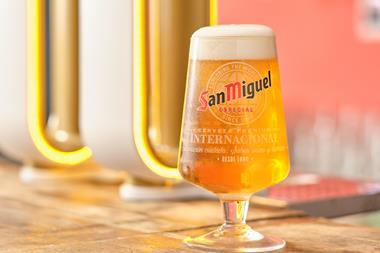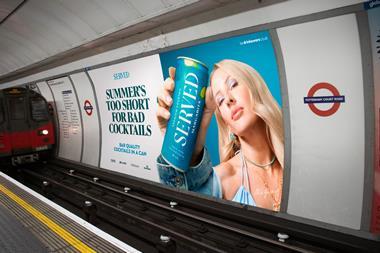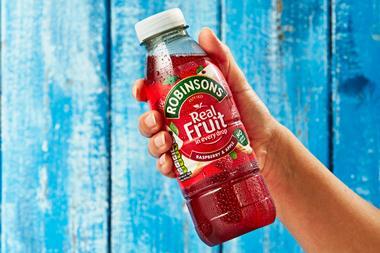Poor old Stella. The great arthouse icon brand that was once 'reassuringly expensive' is now 'reassuringly cheap', a commodity brand in desperate need of a new direction. Triggered by multipack deals The Grocer's recent Christmas Pricewatch data revealed the beer had plunged to its lowest-ever price: 11p per 100ml, or 56p a pint in Morrisons. And, over the past 12 months, its sales dropped 7%, knocking more than £30m from its value, after disappointing performance in previous years.
So can InBev UK keep plugging Stella's 'quality' values with the aim of building the brand back into a luxury brand? Or should it take a different marketing tack and reposition the brand to suit the supermarkets' bargain beer agenda?
InBev UK insists Stella is still a brand of quality and, for the time being, the strapline hasn't been dropped. "It is as much a premium brand as it was five years ago," says the company's president of UK and Ireland Richard Evans, but Evans admits, "we are aware we need to move it forward."
In a bid to regain value, InBev has been highlighting its quality through ad campaigns that eschew its old slogan and accentuate its quality ingredients and production processes, which date back to 1926. It has also kept the link to arthouse cinema, not just in its ad campaigns but through sponsorship of film-related events and on-pack competitions.
It has also created the Brasserie Artois family in the on-trade, built up of various brands from its Artois archives in Belgium. This hasn't gone unnoticed by the off-trade. "I continue to be very impressed with Stella's performance and the move to the family Artois umbrella brand," said Tesco's BWS head Dan Jago. InBev is looking at ways of introducing this concept to the off-trade.
Unfortunately, the link between quality and high prices has been shattered. Like other premium lagers over 5%, Stella has been caught up in a ferocious price war. And worse, consumer tastes are changing. Over the past year, drinkers have been plumping for lower-alcohol lagers with fuller flavour. Now, of the UK's top off-trade beers, the second, third and fourth-placed brands - namely Carling, Foster's and Carlsberg - hold more than 80% of the standard lager market between them and are all closing the gap on Stella.
Brewers were quick to tap into this market this year with brand extensions, and InBev itself brought out the 4% abv Beck's Vier, but no such plans for Stella were forthcoming. "Beck's Vier and Peeterman Artois, which is being trialled in the on-trade, meet this demand for lower-alcohol lagers," says Evans. "The difference is, though, there is nothing 'standard' about them. They have less alcohol but they are premium in terms of image, price and taste."
With a portfolio that includes Leffe and Hoegaarden, InBev is also one of the loudest campaigners for growth in the speciality beer fixture, and recognises drinkers are buying into this segment when seeking quality.
And don't forget - Stella is a huge international icon, flagged as the bestselling beer in many of the 80-plus countries where it is distributed. In the UK alone it has been at the top for many years through the off-trade, with sales of £542m in the year to 4 November 2006, at least £150m more than second-placed brand Carling [ACNielsen, year to 4 November 2006].
But InBev clearly has work to do, admits Evans "After many years of being ahead of the market it is not where we find ourselves today. We are facing a new generation of drinkers who aren't aware of Stella's heritage." n
So can InBev UK keep plugging Stella's 'quality' values with the aim of building the brand back into a luxury brand? Or should it take a different marketing tack and reposition the brand to suit the supermarkets' bargain beer agenda?
InBev UK insists Stella is still a brand of quality and, for the time being, the strapline hasn't been dropped. "It is as much a premium brand as it was five years ago," says the company's president of UK and Ireland Richard Evans, but Evans admits, "we are aware we need to move it forward."
In a bid to regain value, InBev has been highlighting its quality through ad campaigns that eschew its old slogan and accentuate its quality ingredients and production processes, which date back to 1926. It has also kept the link to arthouse cinema, not just in its ad campaigns but through sponsorship of film-related events and on-pack competitions.
It has also created the Brasserie Artois family in the on-trade, built up of various brands from its Artois archives in Belgium. This hasn't gone unnoticed by the off-trade. "I continue to be very impressed with Stella's performance and the move to the family Artois umbrella brand," said Tesco's BWS head Dan Jago. InBev is looking at ways of introducing this concept to the off-trade.
Unfortunately, the link between quality and high prices has been shattered. Like other premium lagers over 5%, Stella has been caught up in a ferocious price war. And worse, consumer tastes are changing. Over the past year, drinkers have been plumping for lower-alcohol lagers with fuller flavour. Now, of the UK's top off-trade beers, the second, third and fourth-placed brands - namely Carling, Foster's and Carlsberg - hold more than 80% of the standard lager market between them and are all closing the gap on Stella.
Brewers were quick to tap into this market this year with brand extensions, and InBev itself brought out the 4% abv Beck's Vier, but no such plans for Stella were forthcoming. "Beck's Vier and Peeterman Artois, which is being trialled in the on-trade, meet this demand for lower-alcohol lagers," says Evans. "The difference is, though, there is nothing 'standard' about them. They have less alcohol but they are premium in terms of image, price and taste."
With a portfolio that includes Leffe and Hoegaarden, InBev is also one of the loudest campaigners for growth in the speciality beer fixture, and recognises drinkers are buying into this segment when seeking quality.
And don't forget - Stella is a huge international icon, flagged as the bestselling beer in many of the 80-plus countries where it is distributed. In the UK alone it has been at the top for many years through the off-trade, with sales of £542m in the year to 4 November 2006, at least £150m more than second-placed brand Carling [ACNielsen, year to 4 November 2006].
But InBev clearly has work to do, admits Evans "After many years of being ahead of the market it is not where we find ourselves today. We are facing a new generation of drinkers who aren't aware of Stella's heritage." n








No comments yet